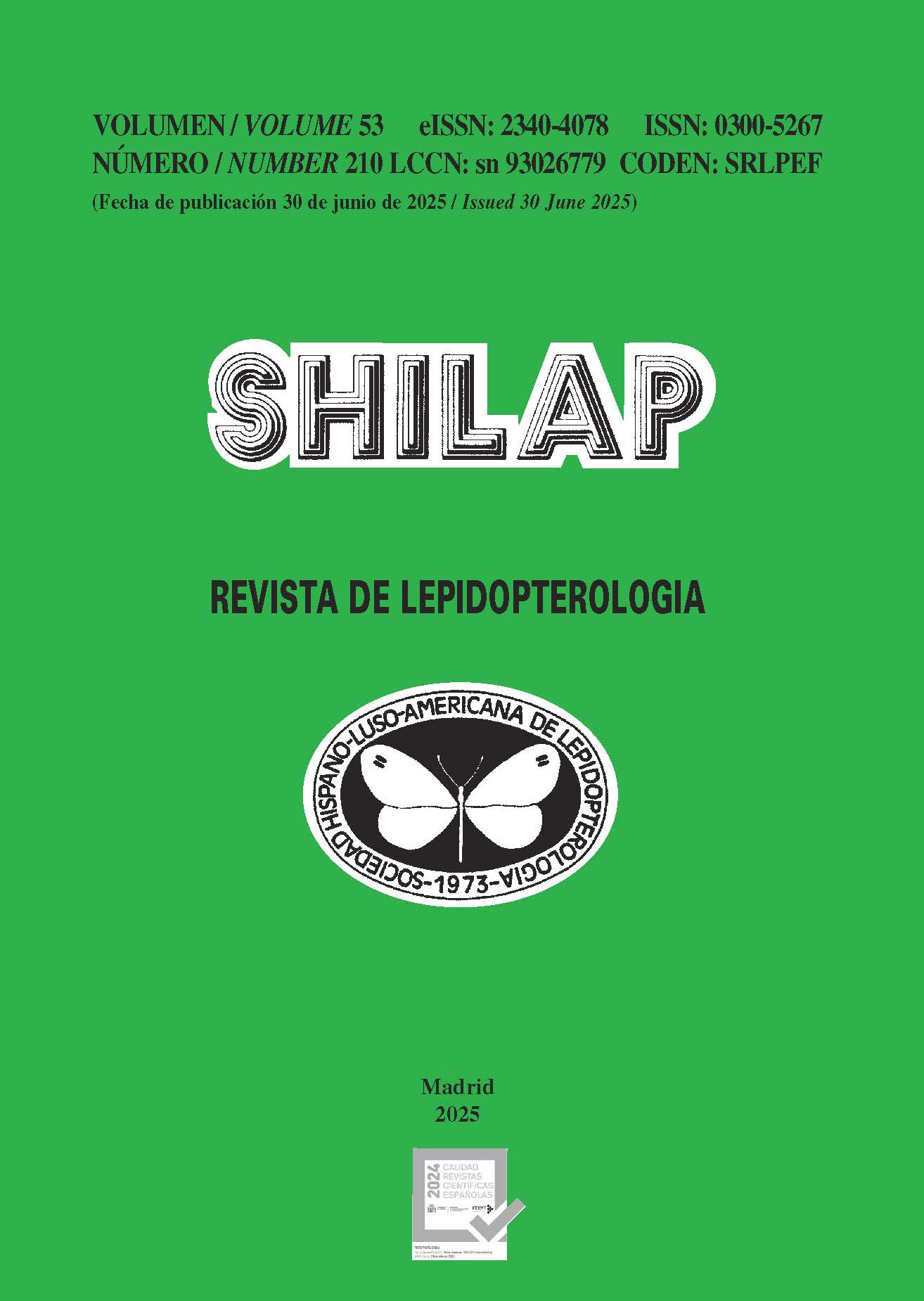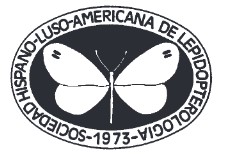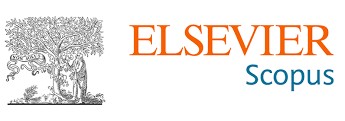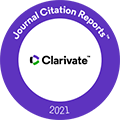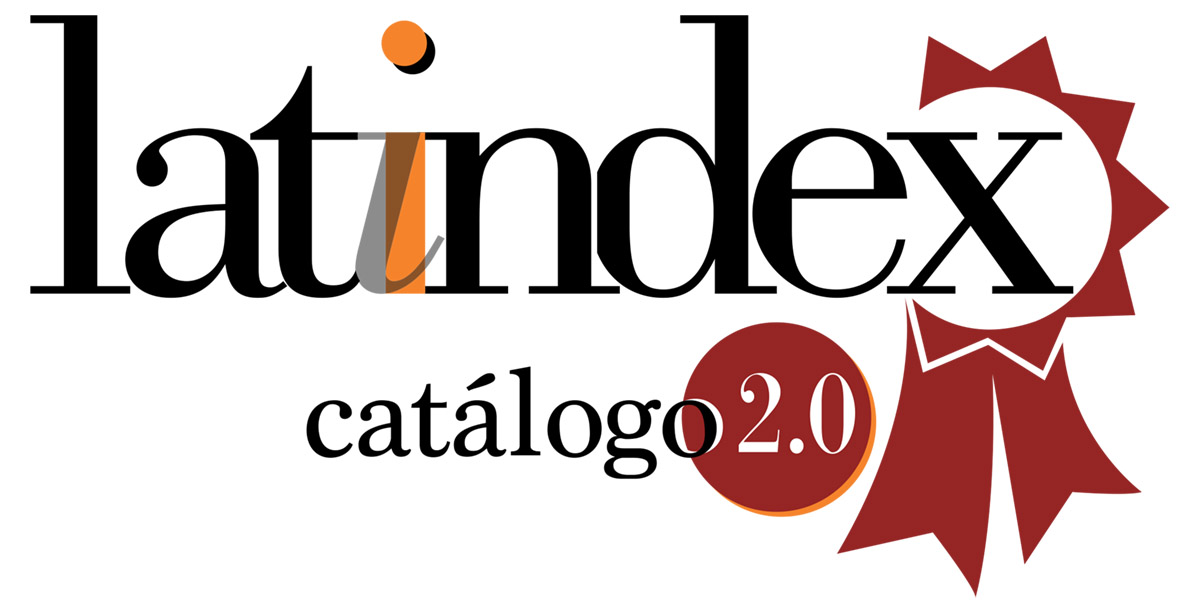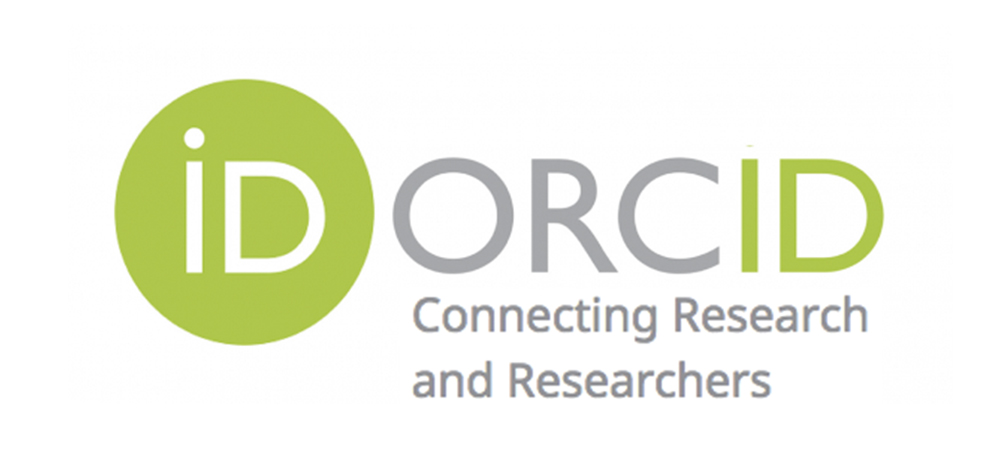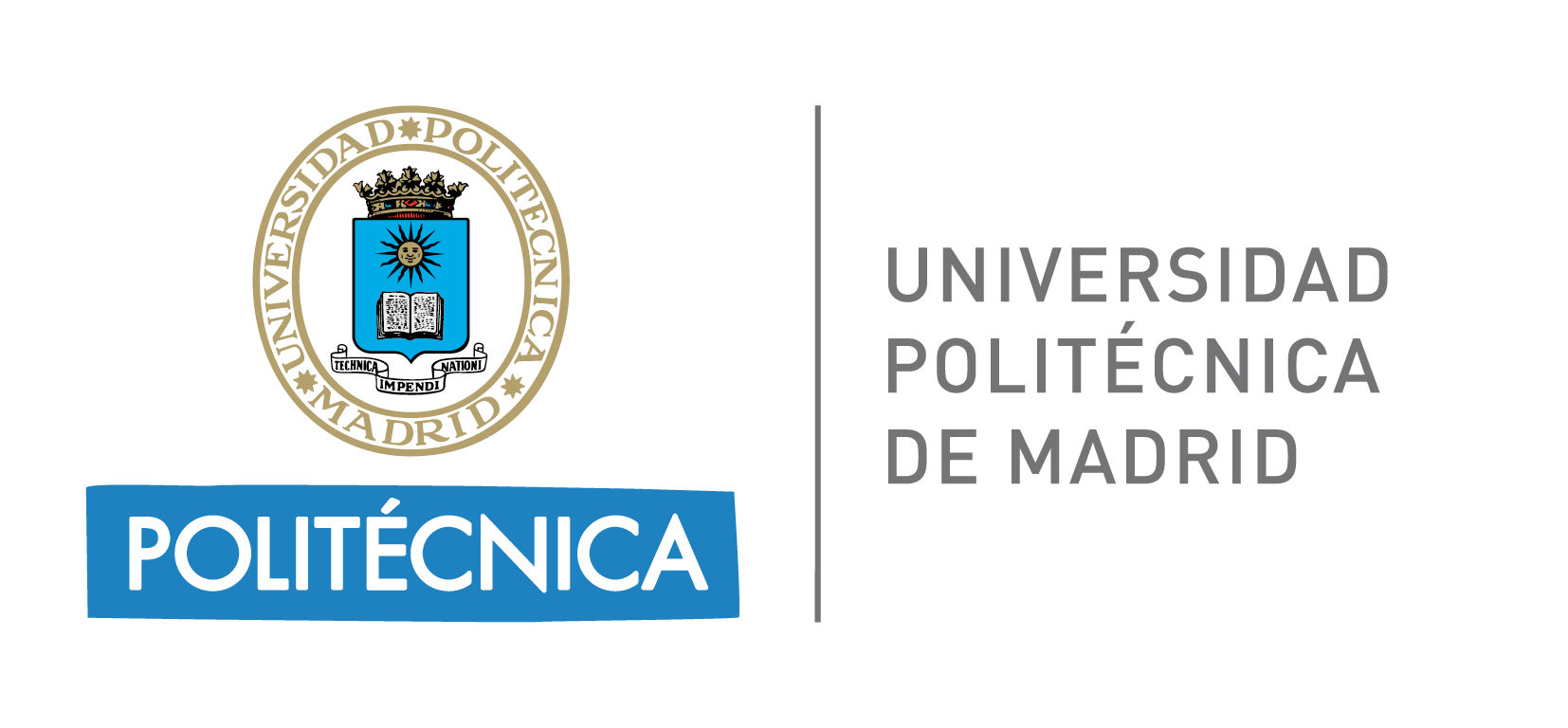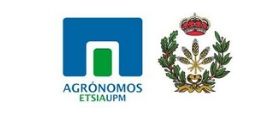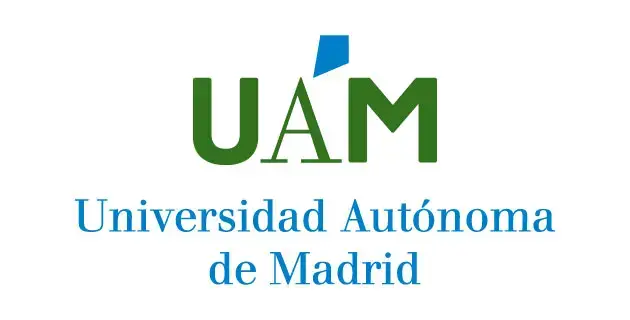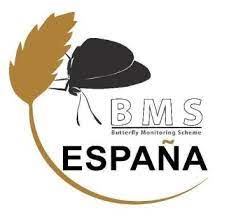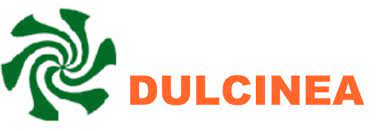A phylogenetically isolated and endemic Geometridae discovered from montane forests in the Canary Island of Tenerife (Spain) (Lepidoptera: Geometridae, Larentiinae)
DOI:
https://doi.org/10.57065/shilap.1052Palavras-chave:
Lepidoptera, Geometridae, Larentiinae, new genus, new species, systematics, Tenerife, SpainResumo
The Lepidoptera fauna of Europe is among the best studied in the world, and new species are only rarely discovered that do not fit in the existing classification. We present an unknown Geometridae from the Canary Islands (Spain), which, according to the multi-gene molecular phylogeny and morphology, represents a phylogenetically isolated lineage and does not fit into any known Geometridae genus or tribe. Using an integrative approach, we classify it in the subfamily Larentiinae, in a lineage that is included in the Larentiini complex of tribes. The new taxon, named Atlanticola mystica Sihvonen, Skou & Falck (new genus, new species) is an island endemic, occurring in Tenerife only and it is restricted to the montane forests above 500 m AMSL. We also illustrate an unrelated Herbulotina grandis (Prout, 1914) for comparison, which has a similar wing pattern, but is structurally different, and it is transferred here from Larentiini to the Xanthorhoini complex of tribes, supporting its original systematic position (original classification revived).
Downloads
Estatísticas globais ℹ️
|
2164
Visualizações
|
288
Downloads
|
|
2452
Total
|
|
Referências
Anonymous (2024). List of Lepidoptera of the Canary Islands. https://en.wikipedia.org/wiki/List_of_Lepidoptera_of_the_Canary_Islands Page visited 14 Feb 2024.
Báez, M. (1998). Mariposas de Canarias. Editorial Rueda.
Báez, M., & Martín, E. (2010). Lepidoptera (pp. 236-249). M. S. Arechavaleta, N. Rodríguez, N. Zurita, A. García (eds). Lista de especies silvestres de Canarias (hongos, plantas y animales terrestres. Gobierno de Canarias, La Laguna. http://www.gobiernodecanarias.org/medioambiente/piac/descargas/Biodiversidad/Listas-Especies/Lista_Especies_Silvestres.pdf
Beshkov, S. (2022). Dyscia intermedia sp. n. - a new Geometrid species from Europe (Lepidoptera: Geometridae: Ennominae). Ecologia Montenegrina, 53, 56-72. https://doi.org/10.37828/em.2022.53.7 DOI: https://doi.org/10.37828/em.2022.53.7
Cook, M. A., & Scoble, M. J. (1992). Tympanal organs of geometrid moths - a review of their morphology, function, and systematic importance. Systematic Entomology, 17, 219-232. https://resjournals.onlinelibrary.wiley.com/doi/abs/10.1111/j.1365-113.1992.tb00334.x DOI: https://doi.org/10.1111/j.1365-3113.1992.tb00334.x
Englund, M., Lee, K. M., Staude, H., Duplouy, A., Hausmann, A., Laiho, E., Söderholm, M., & Sihvonen, P. (2024). 130 years from discovery to description: micro-CT scanning applied to construct the integrative taxonomy of a forgotten moth from Southern Africa (Lepidoptera: Geometridae). Systematic Entomology, 49, 507-525. https://doi.org/10.1111/syen.12627 DOI: https://doi.org/10.1111/syen.12627
Falck, P., Karsholt, O., & Slamka, F. (2019). New data on Pyraloidea from the Canary Islands (Lepidoptera: Pyraloidea). SHILAP Revista de lepidopterología, 47, 33-48. https://shilap.org/revista/article/view/725 DOI: https://doi.org/10.57065/shilap.725
Falck, P., & Hausmann, A. (2020). Scopula villumi Falck & Hausmann, sp. n. from Tenerife, Canary Islands, Spain (Lepidoptera: Geometridae, Sterrhinae). SHILAP Revista de lepidopterología, 48, 507-511. https://shilap.org/revista/article/view/359 DOI: https://doi.org/10.57065/shilap.359
Falck, P., & Karsholt, O. (2022). New data on Noctuoidea from the Canary Islands, Spain (Lepidoptera: Noctuoidea). SHILAP Revista de lepidopterología, 50, 145-165. https://shilap.org/revista/article/view/201 DOI: https://doi.org/10.57065/shilap.201
Guindon, S., Dufayard, J. F., Lefort, V., Anisimova, M., Hordijk, W., & Gascuel, O. (2010). New algorithms and methods to estimate maximum-likelihood phylogenies: assessing the performance of PhyML 3.0. Systematic Biology, 59, 307-321. https://doi.org/10.1093/sysbio/syq010 PMid:20525638 DOI: https://doi.org/10.1093/sysbio/syq010
Hardwick, D. F. (1950). Preparation of Slide Mounts of Lepidopterous Genitalia. The Canadian Entomologist, 82, 231-235. ttps://doi.org/10.4039/Ent82231-11 DOI: https://doi.org/10.4039/Ent82231-11
Hausmann, A., & Viidalepp J. (2012). Larentiinae I. The geometrid moths of Europe. Apollo Books. https://brill.com/display/title/23990
Hausmann, A., & Sihvonen, P. (2019). Revised, annotated systematic checklist of the Geometridae of Europe and adjacent areas (Vols 1-6, pp. 795–871). In B. Müller, S. Erlacher, A. Hausmann, H. Rajaei, P. Sihvonen & P. Skou 2019. Ennominae II. In A. Hausmann, P. Sihvonen, H. Rajaei & P. Skou P (eds), Geometrid Moths of Europe (Vol. 6). Brill. https://brill.com/display/title/24164 DOI: https://doi.org/10.1163/9789004387485_016
Hausmann, A., László G. M., Mayr, T., & Huemer, P. (2023). Surprising discovery of an enigmatic geometrid in Croatia: Mirlatia arcuata, gen. nov., sp. nov. (Lepidoptera, Geometridae). ZooKeys, 1183, 99-110. https://doi.org.10.3897/zookeys.1183.110163 PMid:37953749 PMCid:PMC10632775 DOI: https://doi.org/10.3897/zookeys.1183.110163
Herbulot, C. (1981). Quatre nouveaux Larentiinae du Maroc. Alexanor, 12, 182-184.
Hoang, D. T., Chernomor, O., Von Haeseler, A., Minh, B. Q., & Vinh, L. S. (2018). UFBoot2: improving the ultrafast bootstrap approximation. Molecular Biology and Evolution, 35, 518-522. https://doi.org/10.1093/molbev/msx281 PMid:29077904 PMCid:PMC5850222 DOI: https://doi.org/10.1093/molbev/msx281
IUCN (2022). IUCN Standards and Petitions Committee. Guidelines for Using the IUCN Red List Categories and Criteria. Version 15.1. Prepared by the Standards and Petitions Committee. Downloadable from ttps://www.iucnredlist.org/documents/RedListGuidelines.pdf
Kalyaanamoorthy, S., Minh, B. Q., Wong, T. K. F., Von Haeseler, A., & Jermiin, L. S. (2017). ModelFinder: fast model selection for accurate phylogenetic estimates. Nature Methods, 14, 587-589. https://doi.org/10.1038/nmeth.4285 PMid:28481363 PMCid:PMC5453245 DOI: https://doi.org/10.1038/nmeth.4285
Klots, A. B. (1970). Lepidoptera. In Tuxen, S. L. (ed.), Taxonomists’ glossary of genitalia in insects (pp. 115–130). J. Jorgemsem & Co. http://antbase.org/ants/publications/21060/21060.pdf
Lévêque, A., & Tautel, C. (2023). Compsoptera anargyra (Turati, 1913), nouveau statut: une espèce tyrrhénienne (Lepidoptera, Geometridae, Ennominae, Prosopolophini). Alexanor, 30, 295-309.
Linnaeus, C. (1758). Systema Naturae (10th ed.). Holmiae, Laurentius Salvius. https://linnean-online.org/119965/
Lucas, D. (1938). Contribution à l´étude des Lépidoptères de la France et de l’Afrique du Nord. Bulletin de la Société entomologique de France, 43(13/14), 181-185. https://doi.org/10.3406/bsef.1938.15295 DOI: https://doi.org/10.3406/bsef.1938.15295
McGuffin, W. C. (1977). Guide to the Geometridae of Canada (Lepidoptera), II, Subfamily Ennominae 2. Memoirs of the entomological Society of Canada, 101, 1-191. https://doi.org/10.4039/entm109101fv DOI: https://doi.org/10.4039/entm109101fv
Meyrick E. (1889). Revision of Australian Lepidoptera. Proceedings of the Linnean Society of New South Wales, 4, 1117-1216. https://www.biodiversitylibrary.org/part/15082 DOI: https://doi.org/10.5962/bhl.part.15082
Minet, J., & Scoble, M. J. (1999). The Drepanoid/Geometroid assemblage. In: Kristensen, N. P. (ed.) Lepidoptera: evolution, systematics, and biogeography (pp. 301-320). Walter de Gruyter. https://doi.org/10.1515/9783110804744.301 DOI: https://doi.org/10.1515/9783110804744.301
Minh, B. Q., Schmidt, H. A., Chernomor, O., Schrempf, D., Woodhams, M. D., Von Haeseler, A., & Lanfear, R.. (2020). IQ-TREE 2: new models and efficient methods for phylogenetic inference in the genomic era. Molecular Biology and Evolution, 37, 1530-1534. https://doi.org/10.1093/molbev/msaa015 PMid:32011700 PMCid:PMC7182206 DOI: https://doi.org/10.1093/molbev/msaa015
Müller, B., Erlacher, S., Hausmann, A., Rajaei, H., Sihvonen, P., & Skou P. (2019). Ennominae II. In A. Hausmann, P. Sihvonen, H. Rajaei & P. Skou (eds). Geometrid Moths of Europe (Vol. 6). Brill. https://doi.org/10.1163/9789004387485 DOI: https://doi.org/10.1163/9789004387485
Murillo-Ramos, L., Friedrich, E., Williams, S., Wahlberg, N., Brehm, G., & Sihvonen, P. (2021). A morphological appraisal of the new subfamily Epidesmiinae (Lepidoptera: Geometridae) with an overview of all geometrid subfamilies. Zoological Journal of the Linnean Society, 193, 1205-1233. https://doi.org/10.1093/zoolinnean/zlaa189 DOI: https://doi.org/10.1093/zoolinnean/zlaa189
Õunap, E., Vidalepp, J., & Saarma, U. (2008). Systematic position of Lythriini revised: transferred from Larentiinae to Sterrhinae (Lepidoptera, Geometridae). Zoologica Scripta, 37, 405-413. https://doi.org/10.1111/j.1463-106409.2008.00327.x DOI: https://doi.org/10.1111/j.1463-6409.2008.00327.x
Õunap, E., Nedumpally, V., Yapar, E., Lemmon, A. R., & Tammaru, T. (2024). Molecular phylogeny of north European Geometridae (Lepidoptera: Geometroidea). Systematic Entomology, 2024 (early view), 1-36. https://doi.org/10.1111/syen.12638 DOI: https://doi.org/10.1111/syen.12638
Patočka, J., & Turčani, M. (2005). Lepidoptera pupae, Central European species. Apollo Books. https://doi.org/10.1163/9789004531031 DOI: https://doi.org/10.1163/9789004531031
Peña, C., & Malm, T. (2012). VoSeq: a voucher and DNA sequence web application. PLoS One, 7, e39071. https://doi.org/10.1371/journal.pone.0039071 PMid:22720030 PMCid:PMC3373637 DOI: https://doi.org/10.1371/journal.pone.0039071
Pinker, R. (1960). Interessante und neue Funde und Erkenntnisse für die Lepidopterenfauna der Kanaren. Zeitschrift des Wiener Entomologischen Gesellschaft, 45, 97-103. https://www.zobodat.at/pdf/ZOEV_45_0097-0103.pdf
Pinker, R. (1963). Interessante und neue Funde und Erkenntnisse für die Lepidopterenfauna der Kanaren II. Zeitschrift des Wiener Entomologischen Gesellschaft, 48, 183-190. https://www.zobodat.at/pdf/ZOEV_48_0183-0190.pdf
Pinker, R. (1971). Neue und interessante Lepidopteren aus Madeira und den Azoren mit faunistischen Hinweisen auf die Kanaren. Zeitschrift des Wiener Entomologischen Gesellschaft, 54, 101-131. ZOEV_54_0101-0131.pdf (zobodat.at)
Pinker, R. (1978). Zwei neue Spanner von den Kanaren (Lep., Geometridae) (VI Kararen-beitrag). Nachrichtenblatt der Bayerischten Entomologen, 27, 17-20. https://biostor.org/reference/98696
Pohl, G. R., & Nanz, S. R. (2023). Annotated taxonomic checklist of the Lepidoptera of North America, North of Mexico. Wedge Entomological Research Foundation.
Prout L. B. (1912-1916). Die Spanner des Palaearktischen faunengebietes. In A. Seitz (ed.), Die Gross-Schmetterlinge der Erde (Vol. 4). A. Kernen. https://www.zobodat.at/pdf/Seitz-Schmetterlinge-Erde_4_1916_Text_en_0001-0562.pdf
Prout L. B. (1934-1939). Die Spanner des Palaearktischen faunengebietes. In A. Seitz (ed.). Die Gross-Schmetterlinge der Erde, Supplement zu Band 4 (Vol. 4). A. Kernen. https://doi.org/10.5962/bhl.title.149709 DOI: https://doi.org/10.5962/bhl.title.149709
Rajaei, H., Hausmann, A., Scoble, M., Wanke, D., Plotkin, D., Brehm, G., Murillo-Ramos, L., & Sihvonen, P. (2022). An online taxonomic facility of Geometridae (Lepidoptera), with an overview of global species richness and systematics. Integrative Systematics, 5, 1-48. https://doi.org/10.18476/2022.577933 DOI: https://doi.org/10.18476/2022.577933
Ratnasingham, S., & Hebert, P. D. (2007). BOLD: the barcode of life data systems. Molecular Ecology Notes, 7, 355-364. https://doi.org/10.1111/j.1471-8286.2007.01678.x PMid:18784790 PMCid:PMC1890991 DOI: https://doi.org/10.1111/j.1471-8286.2007.01678.x
Rebel, H., & Rogenhofer, A. (1894). Zur Lepidopterenfauna der Canaren. Annalen des (K. K.) Naturhistorischen (Hof) Museum, Wien, 1894, 1-96, pl. 1. https://www.biodiversitylibrary.org/item/26867#page/17/mode/1up
Rebel, H. (1896). Dritter Beitrag zur Lepidopterenfauna der Canaren. Annalen des (K. K.) Naturhistorischen (Hof) Museum, Wien, 11, 102-148, pl. 3. https://www.biodiversitylibrary.org/item/26869#page/122/mode/1up
Rebel, H. (1938). Achter Beitrag Lepidopteren-fauna der Kanaren. Annalen des (K. K.) Naturhistorischen (Hof) Museum, Wien, 49, 43-68.
Robinson, G. (1976). The preparation of slides of Lepidoptera genitalia with special reference to the Microlepidoptera. Entomologist’s Gazette, 27, 127-132.
Rodeland, J., & Rennwald, J. (2006-2024). Lepiforum: Bestimmungshilfe für die in Europa nachgewiesenen Schmetterlingsarten. Lepiforum e.V. https://lepiforum.org.
Rungs, C. E. E. (1950). Notes de lépidoptérologie marocaine (XVI): descriptions et notes critiques. Bulletin de la Société des Sciences Naturelles et Physiques du Maroc, 28, 142-166.
Sibatini, A. (1972). Male genitalia of Lepidoptera: morphology and nomenclature IV. Notes on Tuxen’s ‘Taxonomist’s glossary of genitalia in insects’: second enlarged edition. Journal of the Lepidopterists’ Society, 26, 117-122. https://www.biodiversitylibrary.org/item/127735#page/129/mode/1up
Sihvonen, P. (2001). Everted vesicae of the Timandra griseata group: methodology and differential features (Geometridae, Sterrhinae). Nota lepidopterologica, 24, 57-63. https://www.biodiversitylibrary.org/part/147505
Sihvonen, P. (2005). Phylogeny and classification of the Scopulini moths (Lepidoptera: Geometridae, Sterrhinae). Zoological Journal of Linnean Society, 143, 473-530. https://doi.org/10.1111/j.1096-3642.2005.00153.x DOI: https://doi.org/10.1111/j.1096-3642.2005.00153.x
Souza Moraes, S., Söderholm, M. S., Aguiar, T. M. C., Freitas, A. V. L., & Sihvonen, P. (2023). Micro-CT imaging in species description: exploring beyond sclerotized structures in lichen moths (Lepidoptera: Erebidae, Arctiinae, Lithosiini). PeerJ, 11, e15505 https://doi.org/10.7717/peerj.15505 PMid:37465151 PMCid:PMC10351509 DOI: https://doi.org/10.7717/peerj.15505
Tautel, C., & Lévêque, A. (2020). Révision des taxa du groupe de Perizoma obsoletata (H.-S., 1838) en France et leur biologie. Alexanor, 29, 565-597.
Vives Moreno, A. (2014). Catálogo sistemático y sinonímico de los Lepidoptera de la Península Ibérica, de Ceuta, de Melilla y de las islas Azores, Baleares, Canarias, Madeira y Salvajes (Insecta: Lepidoptera). Suplemento de SHILAP Revista de lepidopterología, Improitalia.
Wahlberg, N., & Wheat, C. W. (2008). Genomic outposts serve the phylogenomic pioneers: designing novel nuclear markers for genomic DNA extractions of Lepidoptera. Systematic Biology, 57, 231-242. https://doi.org/10.1080/10635150802033006 PMid:18398768 DOI: https://doi.org/10.1080/10635150802033006
Wahlberg, N., Peña, C., Ahola, M., Wheat, C. W., & Rota, R. (2016). PCR primers for 30 novel gene regions in the nuclear genomes of Lepidoptera. ZooKeys, 596, 129-141. https://doi.org/10.3897/zookeys.596.8399 PMid:27408580 PMCid:PMC4926658 DOI: https://doi.org/10.3897/zookeys.596.8399
Downloads
Publicado
Como Citar
Edição
Secção
Licença
Direitos de Autor (c) 2025 Pasi Sihvonen, Peder Skou, Per Falck, Leidys Murillo-Ramos, Elina Laiho, Max Söderholm, Hermann Staude, Mikael Englund

Este trabalho encontra-se publicado com a Licença Internacional Creative Commons Atribuição 4.0.
O autor mantém os seus direitos de marca registada e de patente para qualquer processo ou procedimento dentro do artigo.
O autor mantém o direito de partilhar, distribuir, executar e comunicar publicamente o artigo publicado no SHILAP Revista de lepidopterología, com reconhecimento inicial da sua publicação no SHILAP Revista de lepidopterología.
O autor reserva-se o direito de fazer uma publicação posterior da sua obra, desde a utilização do artigo até à sua publicação num livro, desde que indique a sua publicação inicial no SHILAP Revista de lepidopterología.
Cada apresentação ao SHILAP Revista de lepidopterología deve ser acompanhada por uma aceitação dos direitos de autor e reconhecimento da autoria. Ao aceitá-los, os autores retêm os direitos autorais da sua obra e concordam que o artigo, se aceite para publicação pelo SHILAP Revista de lepidopterología, será licenciado para uso e distribuição sob uma licença "Creative Commons Attribution 4.0 International" (CC BY 4.0), que permite a terceiros partilhar e adaptar o conteúdo para qualquer fim, dando o devido crédito à obra original.
Pode consultar aqui a versão informativa e o texto legal da licença. A indicação da licença CC BY 4.0 deve ser expressamente indicada desta forma quando necessário.
A partir de 2022, o conteúdo da versão impressa e digital é licenciado sob uma licença de utilização e distribuição "Creative Commons Attribution 4.0 International" (CC BY 4.0), que permite a terceiros partilhar e adaptar o conteúdo para qualquer fim, dando o devido crédito à obra original.
O conteúdo anterior da revista foi publicado sob uma licença tradicional de direitos de autor; no entanto, o arquivo está disponível para acesso livre.
Ao utilizar o conteúdo do SHILAP Revista de lepidopterología publicado antes do ano 2022, incluindo figuras, tabelas ou qualquer outro material em formato impresso ou eletrónico pertencem aos autores dos artigos, os autores devem obter a autorização do detentor dos direitos de autor. As responsabilidades legais, financeiras e criminais a este respeito pertencem ao(s) autor(es).
Em aplicação do Princípio de Prioridade do Código Internacional de Nomenclatura Zoológica, nenhuma outra versão além da publicada pela editora pode ser depositada em repositórios, websites pessoais ou similares.
